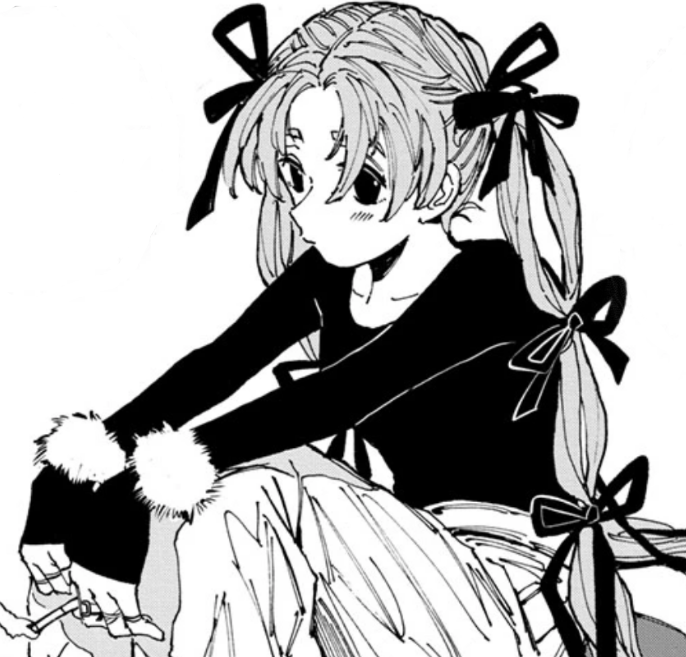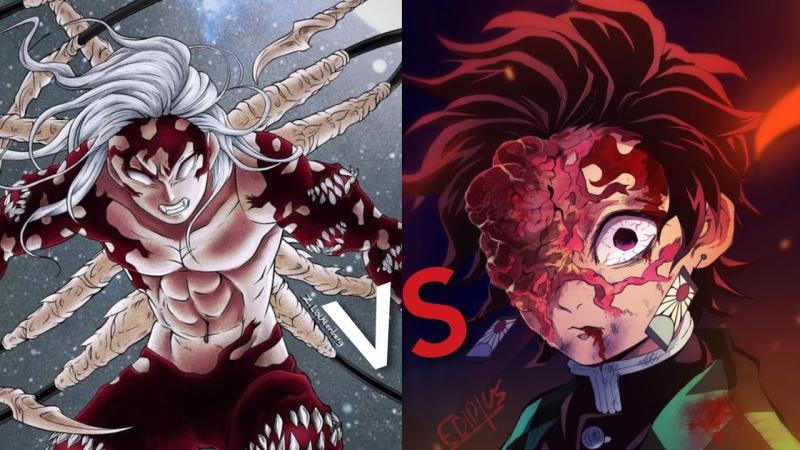The Impact of the Infinity Castle Arc Trilogy Announcement: What it Means for the Future of Anime Films
Alright, folks, buckle up! If you’re a die-hard anime fan like me, then you’ve probably already heard the massive news that’s been making waves across the anime community. That’s right, Demon Slayer: Kimetsu no Yaiba is taking its final arc—The Infinity Castle—and turning it into a trilogy of films. Yep, not just one mind-blowing cinematic experience, but THREE. And let me tell you, the internet is losing its collective mind. But what does this really mean for the future of anime films? Are we witnessing the dawn of a new era where every final arc becomes a movie event? Or is this a risky move that could backfire? Let’s dive into it.

Demon Slayer poster
The Rise of Anime Cinematic Universes: How We Got Here
Before we get into why the Infinity Castle Arc being split into three films is a big deal, let’s rewind a little. Anime movies weren’t always the thing. Back in the day, most anime films were non-canon side stories, like the endless stream of Naruto and Dragon Ball Z movies. They were fun, sure, but they didn’t really matter to the overall plot. If you missed them, no biggie.
Then along came Demon Slayer: Mugen Train in 2020, and everything changed. Not only was it canon, but it also tied directly into the series, making it essential viewing. And boy, did it blow up! I mean, we’re talking about the highest-grossing anime film of all time here—surpassing even Studio Ghibli’s Spirited Away. It didn’t just set a new standard for anime movies; it made them mainstream. Suddenly, anime fans were flocking to theaters like they were watching the next Avengers movie. And the success of Mugen Train wasn’t a fluke. It showed studios that fans were willing to shell out cash for quality cinematic experiences that actually mattered to the plot.
So naturally, the folks at Ufotable (the studio behind Demon Slayer) thought, “Hey, why not go even bigger for the final arc?” And thus, the Infinity Castle trilogy was born.

Mugen Train scene
Why Three Movies, Though? Why Not a Final Season?
Look, I get it. You might be thinking, “Why the heck do we need three movies? Why not just make a final season like normal anime?” Trust me—I had that exact thought at first. But after screaming into the void for a bit, I started to see some method to this madness.
1. Movies Mean Bigger Budgets
Let’s be real: anime budgets can be tight. A typical anime episode has to stretch its budget across an entire season, which sometimes results in, uh, questionable animation quality (cough Seven Deadly Sins cough). But movies? Movies get that sweet, sweet cinematic budget. And if there’s one thing we know about Ufotable, it’s that they LOVE to flex their animation muscles.
Remember how Mugen Train looked? That was like watching an art museum come to life with swords and demons. Now imagine that, but stretched across three movies, with some of the most insane battles in Demon Slayer history (I’m looking at you, Kokushibo vs. the Hashira). Yeah, sign me up.

Demon Slayer animation
2. Pacing and Story Flow
The Infinity Castle Arc is massive—like, absolutely stuffed with action, character backstories, and emotional moments. We’re talking 65 chapters of manga content here. Trying to cram all of that into a single film or even a 12-episode season might feel rushed, and important moments could get glossed over. By splitting it into three movies, Ufotable can take its time and give each major fight and emotional beat the attention it deserves. It’s like having three mini-finales instead of just one.
Think about it: the first movie can focus on the initial infiltration of the castle, the second on the major Hashira battles, and the third on the final showdown with Muzan. It’s a nice, clean way to divide the arc without overwhelming the audience.
3. Cliffhangers Build Anticipation
Love them or hate them, cliffhangers work. One of the reasons Attack on Titan’s final season has people on the edge of their seats is the insane cliffhangers at the end of each part. By splitting the Infinity Castle arc into three films, Ufotable can build anticipation between releases. You’ll leave the theater after the first movie practically foaming at the mouth for the next one. It’s a bit evil, but hey, it works.

Attack on Titan
But Is This a Risky Move? (Yeah, It Kinda Is)
Okay, let’s not sugarcoat it—this is a bold strategy. And like any big move, it comes with some risks.
1. The Mugen Train Effect
Yes, Mugen Train was a massive success. But we can’t ignore the fact that it came out during a very unique time. The COVID-19 pandemic meant theaters were starved for content, and Mugen Train faced little competition. It also served as a direct continuation of the anime, so fans HAD to watch it to understand the next season.
The Infinity Castle trilogy, on the other hand, won’t have that same pandemic boost. And while fans are definitely excited, there’s a chance that splitting the final arc into three movies could feel like overkill. After all, not every fan is going to be thrilled about waiting a year or more between each part. If the first movie doesn’t absolutely crush it, the momentum could fizzle out before the third film even hits theaters.
2. Pacing Problems
With great power (or in this case, three movies) comes great responsibility. The Infinity Castle arc is long, but it doesn’t have a ton of natural stopping points. Ufotable’s going to have to be very careful about where they cut each movie, because if the pacing feels off or if there’s a big cliffhanger in a weird place, fans could walk away frustrated. We’ve all seen movies (and TV shows) that drag things out unnecessarily just to fill runtime, and it’s not a good look.
3. Are We Milking This Franchise?
Let’s address the elephant in the room: is this just a cash grab? I mean, three movies instead of one final season? It’s hard to ignore the possibility that Ufotable and Aniplex are trying to milk every last drop out of Demon Slayer. And while I’m all for more high-quality content, there’s always the risk that stretching the story across three films might feel unnecessary. It’s a fine line between giving fans more of what they love and overstaying your welcome. Just ask The Hobbit trilogy.

The Hobbit
The Bigger Picture: What This Means for Anime Films
So, what does the Infinity Castle trilogy mean for the future of anime adaptations? Well, it’s part of a growing trend of anime studios shifting towards cinematic releases for major arcs and finales. And to be honest, I’m kinda torn about it.
1. The Canon Film Trend
Anime films used to be mostly non-canon, like the Naruto and Dragon Ball movies I mentioned earlier. But now, we’re seeing more and more anime films that are crucial to the overall story. Mugen Train, Jujutsu Kaisen 0, and even the upcoming Haikyuu!! final movie all fall into this category. It’s not just a fun side adventure—it’s required viewing if you want to keep up with the plot.
On one hand, this is awesome. It means that studios are putting more effort into their films and giving us higher-quality content. But on the other hand, it’s a bit of a double-edged sword. Not everyone has easy access to theaters, especially for anime films, which often have limited screenings. If you miss the movie, you’re out of luck until it hits streaming months later, and by then, spoilers are everywhere. It creates a bit of a barrier for fans who can’t easily get to a theater.
2. The Future of Long-Form Storytelling
One of the things I love about anime is the long-form storytelling. You get to spend weeks with these characters, following their journeys and growing attached to them. But with the shift towards movies, we’re seeing a bit of a change in how these stories are told.
Movies are more concise by nature. You’ve got about two hours to tell a story, compared to the 12-episode (or more!) runtime of a typical anime season. This can be a good thing—no filler episodes, tighter pacing—but it also means that some of the slower, more emotional moments might get cut in favor of action-packed set pieces. And while I love a good fight scene as much as the next guy, I’d hate to see some of the character development get lost in translation.

Anime storytelling
Global Hype and Fan Events: The Movie Experience
Now, let’s talk about one thing that movies definitely have going for them: the experience. There’s something magical about watching an anime film on the big screen, surrounded by fellow fans who are just as hyped as you are. And with the Infinity Castle trilogy, you can bet there will be some epic global fan events and premiere screenings.
Remember how Mugen Train had special screenings with exclusive merch and fan meet-ups? You can bet your Demon Slayer sword that the Infinity Castle trilogy will have something similar. We’re talking about worldwide premieres, IMAX releases, and maybe even some red carpet events. It’s a chance for fans to come together and celebrate the end of an era, and that’s something you just don’t get with a regular TV season.
Plus, it’s a great marketing strategy. These events build hype (ugh, I said I wouldn’t use that word, but here we are), drive ticket sales, and keep the Demon Slayer brand in the spotlight. And let’s be real, we’re all suckers for exclusive merch.

Fan events
My Final Thoughts (Spoiler: I’m Excited, But Also Nervous)
Look, I’m not going to lie—this whole Infinity Castle trilogy thing has me feeling a lot of emotions. On one hand, I’m freaking pumped. Ufotable has proven time and time again that they know how to deliver jaw-dropping (ugh, I said no fancy words, but whatever) animation, and the thought of seeing the final battles on the big screen has me ready to throw my money at them.
But I’m also a little nervous. Splitting the final arc into three movies is a big gamble, and if it doesn’t pay off, it could leave fans feeling disappointed. The pacing has to be perfect, the emotional beats need to land, and—most importantly—it can’t just feel like a cash grab.
That being said, I’m cautiously optimistic. Ufotable hasn’t let me down yet, and I’m hoping the Infinity Castle trilogy will be the epic, emotional rollercoaster that Demon Slayer fans deserve. So, I’ll be counting down the days until the first movie drops, popcorn in hand, ready to scream at the screen when Tanjiro takes on Muzan.
Here’s hoping it lives up to the hype—oops, I said it again. Oh well, let’s roll with it.

















